Large-Scale Experiments Demonstrate Advanced Controls for Autonomous Energy Systems

In a breakthrough for the autonomous energy systems (AES) research program, the National Renewable Energy Laboratory (NREL) has demonstrated new methods for optimizing more than 1 million distributed energy resources (DERs) with autonomous controls. The updated approach cuts the computation time by more than tenfold, enabling real-time distribution system optimization for economics and stability in high-renewable power systems.
"One challenge with scaling up autonomous controls is implementing the algorithms across so many feeders without running up the computational complexity," said Xinyang Zhou, an NREL researcher who helped lead a Department of Energy Solar Energy Technologies Office project named SolarExPert, a public-private collaboration to develop advanced controls for distributed energy systems.
"Our updated algorithms will allow a utility to deploy this technology with far less labor, enabling even very large systems to self-optimize using distributed computation of grid-edge devices," Zhou said.
With this work, the team reached a new milestone in distributed control, showing how several layers of hierarchical coordination are sufficient to manage a vast footprint of DERs, such as rooftop solar and energy storage systems. Using a hierarchical-distributed architecture, the team demonstrated 100% renewable scenarios, multi-timescale operation, and co-optimization of the distribution and transmission systems.
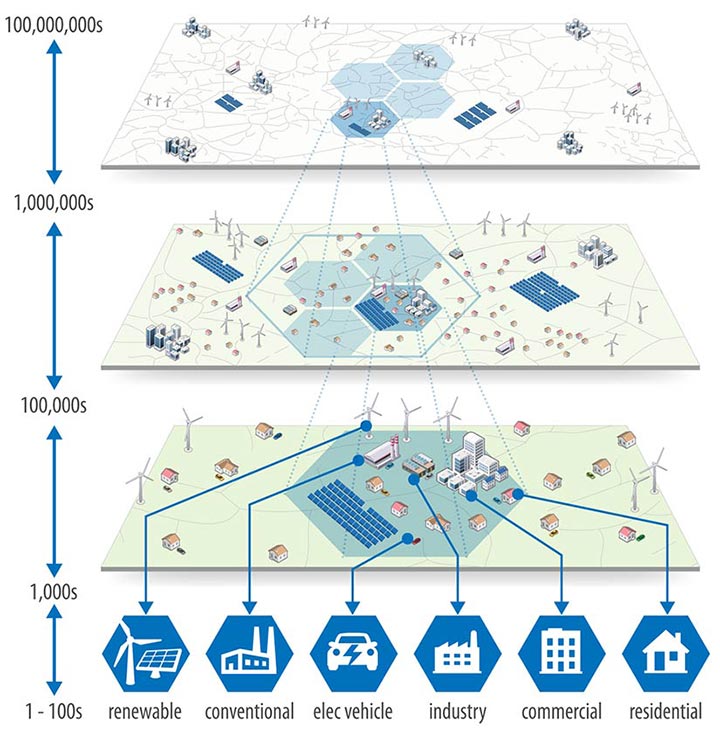
In AES, controls are hierarchical and distributed: Higher-up layers coordinate operations based on data and measurements from the grid. The higher layers send coordinating information to the lower layers, which then aggregate and broadcast information down to even lower layers. This coordination reaches the device level, where an aggregator or the devices themselves use internal controls to optimize in response to the coordination signals.
Of course, the researchers were not able to borrow a real 1-million-node power system to test their controls. Instead, they turned to SMART-DS (Smart Models for Advanced, Realistic Testing: Distribution Systems and Scenarios), an NREL-developed software that generates realistic power system models for real metropolitan areas. At NREL, the team integrated a model of the Bay Area grid with real power-hardware-in-the-loop. They connected 90 DERs in the simulation—including battery, solar photovoltaics, and electric vehicle inverters—nearly maxing out NREL's experimental capacity to demonstrate advanced distribution system controls.
On the Bay Area power grid, the researchers implemented their controls using multiple hierarchical layers. The highest layer divided the Bay Area into seven large sections, each containing a couple hundred feeders. At the bottommost layer, multiple DERs were aggregated into a single node, resulting in nearly 1 million nodes in the simulation. But the researchers quickly realized the computational challenges of such large-scale operation.
"Originally, when we deployed our controls, the computation was impossibly large for any distribution management system. As the number of nodes increased, the computational complexity would grow quadratically; it was unusable in practice," Zhou explained.
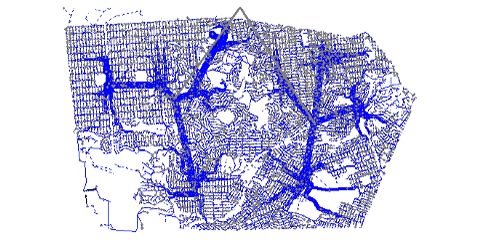
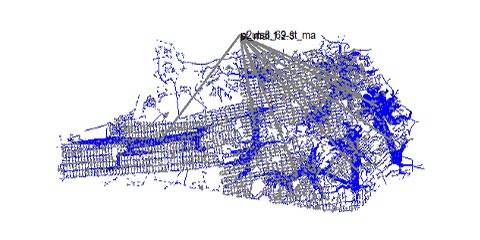
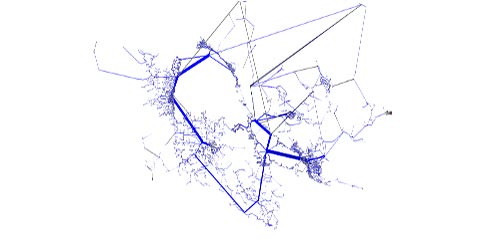
To simulate a high-penetration DER distribution system, the researchers used SMART-DS, an NREL tool for generating highly realistic power system models. In this case, the researchers used a San Francisco data set, which provides an accurate system to validate advanced controls. Three of seven sections are shown. Graphic from SMART-DS, NREL
"One major breakthrough was our development of automated feeder customization. With over one thousand feeders, each needed to be individually configured. We developed an algorithm that automatically grabbed grid information from the feeders and converted it to a standardized form."
With this change and others, Zhou and the team could scale up their controls while avoiding excessive computation. Compared to past demonstrations of AES, their effort showed that the full implementation of autonomous algorithms—including an application for estimating grid conditions from measurements—is functional on realistic power systems.
Building On Innovations in Distributed Control
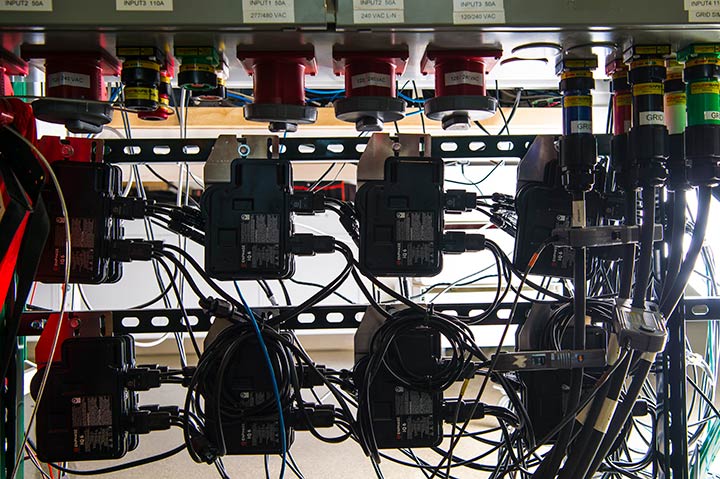
This recent accomplishment builds on a novel grid framework that is years in the making and has the potential to be a disruptive solution for future energy systems. The AES body of work pioneered by NREL Power Engineering Systems Center Director Ben Kroposki has resulted in commercial products and industry applications. Following one of the first live demonstrations of autonomous algorithms for DERs, NREL has continually extended the AES research portfolio and demonstrated its success each step of the way.
In this project, the researchers merged multiple advances in AES. For example, the updated method combines real-time optimal power flow operation (the engine behind AES) with state estimation to infer voltages across the distribution system. Working together, these two applications allow DERs to optimally respond to a changing grid.
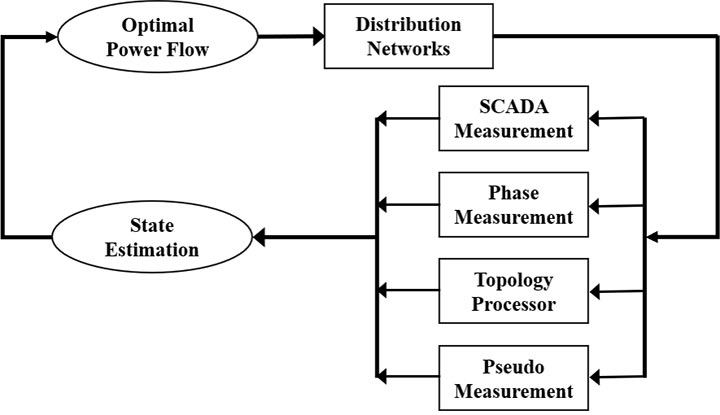
"Combining state estimation and optimal power flow is an entirely new capability for autonomous energy systems. This approach also reduces computation time by distributing state estimation, rather than computing centrally," Zhou said.
"To get to this point, we first had to get the fundamental framework down. Only because we've demonstrated the optimal power flow and state estimation portions in the past, we were able to bring them together in a fully operational, integrated demonstration," Zhou said.
In another improvement, the NREL team coupled distribution-level voltage optimization with transmission-level load scheduling—a multi-timescale problem that spans subsecond to hourly or daily operation. Their work goes one step further in proving how AES can be deployed effectively anywhere. Still, their solution will need to wait for the tides to turn in underlying power markets and regulation.
Barriers to Commercial Breakthrough
Following such a realistic validation, NREL's algorithms are all but ready to roll out. In fact, part of the Solar Energy Technologies Office (SETO) SolarExPert project involved commercialization, in which an industry partner installed the controls on its microgrid management software platform; however, the full potential of NREL's controls are restricted by current grid designs.
Integrated Energy Pathways
Integrated energy pathways modernizes our grid to support a high level of renewables, incorporates storage and advanced controls, and expands transportation electrification while maintaining grid reliability and security.
"We have the capability to operate real-time, two-way electricity markets, with automated transactions between consumers and producers of distributed energy. We can coordinate the controls so that they respond to market incentives—for example, a control signal would say 'DER, if you lower your output a bit, you will be compensated $0.01.' But on real systems, such peer-to-peer markets are currently nonexistent."
Peer-to-peer markets for distribution systems are in an early stage, if any stage at all; however, a recent regulatory order has opened the bulk power market to DERs. As utilities accommodate this change, NREL's algorithms could provide all the necessary tools for a high-DER power market.
Besides an updated marketplace, an AES rollout will require better situational awareness in the form of more grid measurement and communication devices. While not necessarily expensive, such situational awareness infrastructure does involve some strategizing. NREL's advanced distribution management system test bed can help stakeholders see their next steps for deploying advanced controls, such as AES, in a replica grid environment.
Funding for the work was provided by SETO and NREL laboratory-directed funds. The SolarExPert project recently concluded, supporting the long-term goal of the SETO ENERGISE (Enabling Extreme Real-Time Grid Integration of Solar Energy) program to design highly scalable technologies for high-penetration DER distribution systems to operate reliably and securely. Meanwhile, NREL's AES work continues; a recent workshop dove into the resilience aspects of AES.
Learn more about NREL's distributed optimization and control research.
Last Updated May 28, 2025
